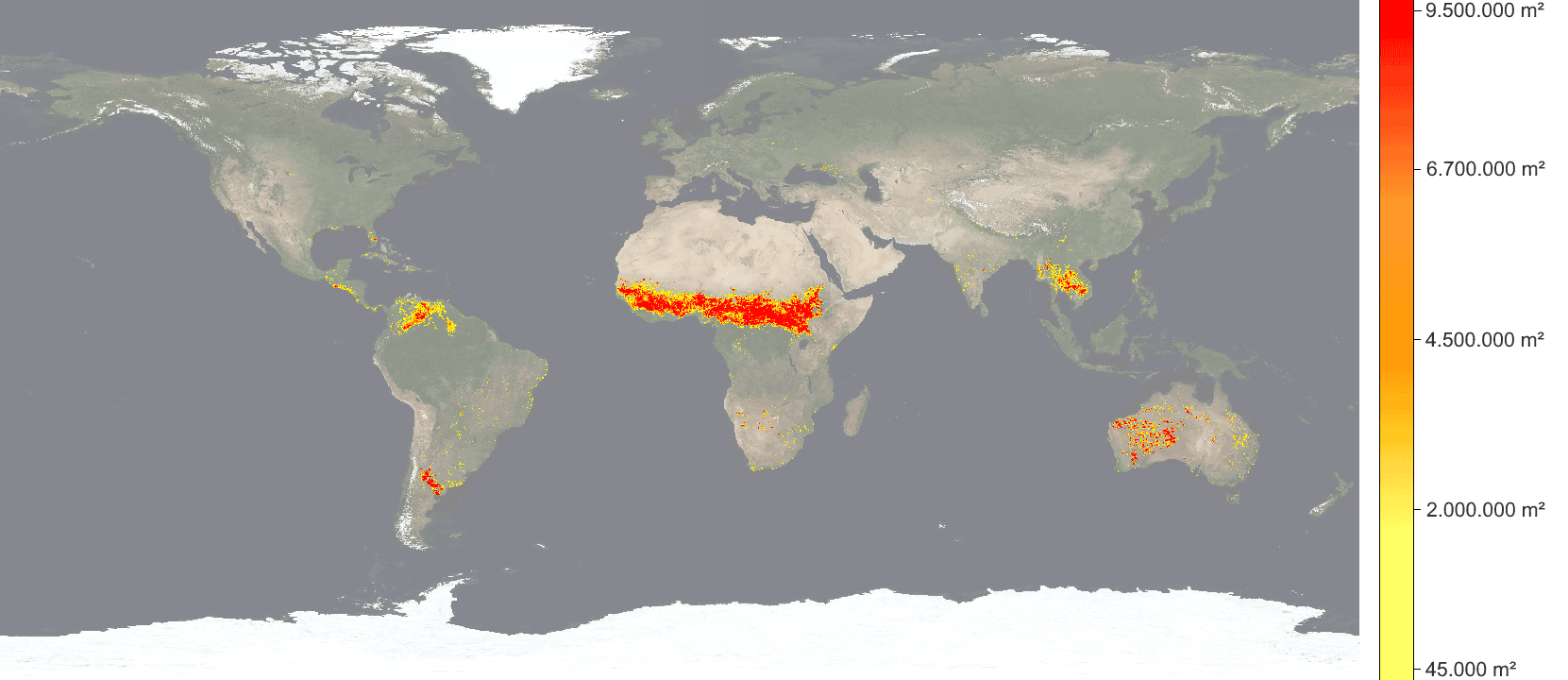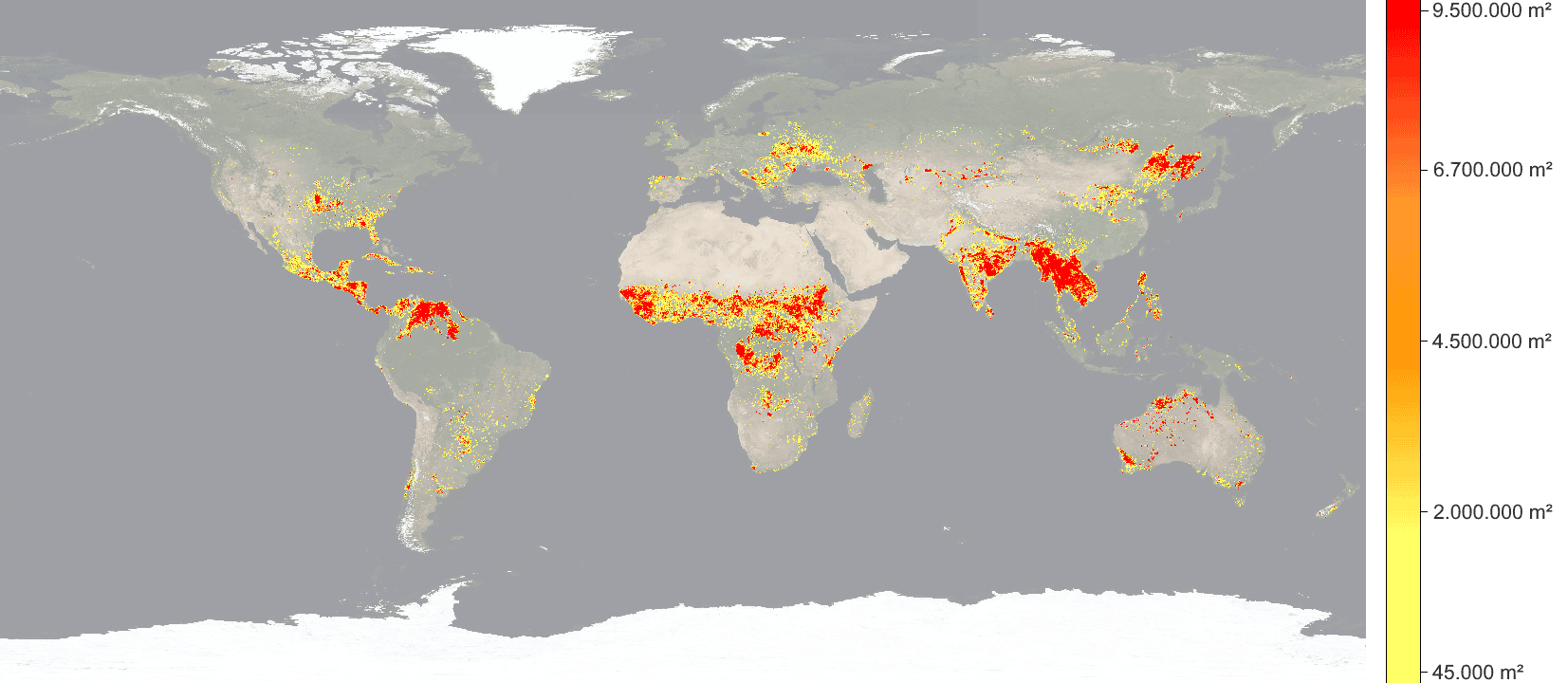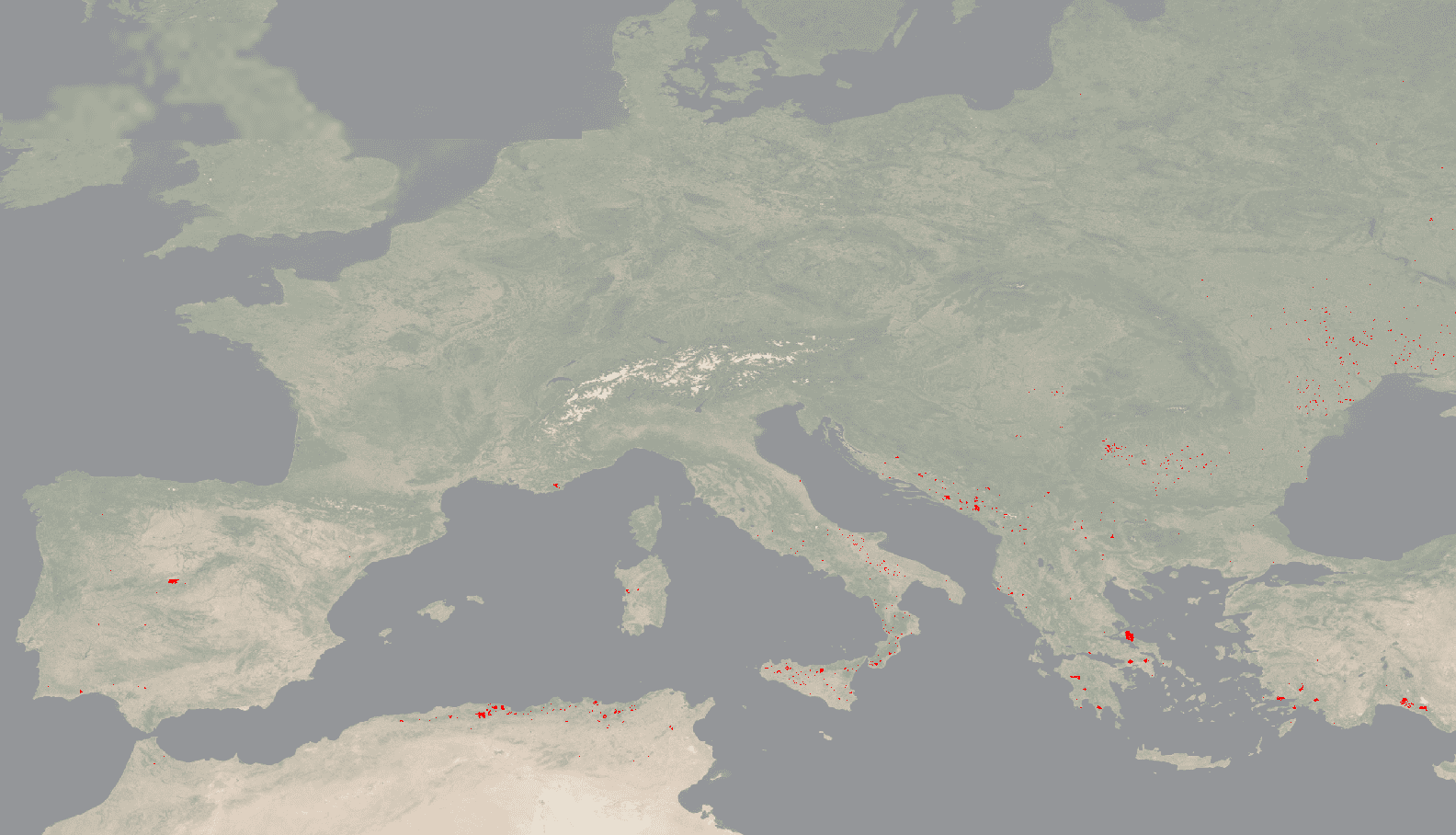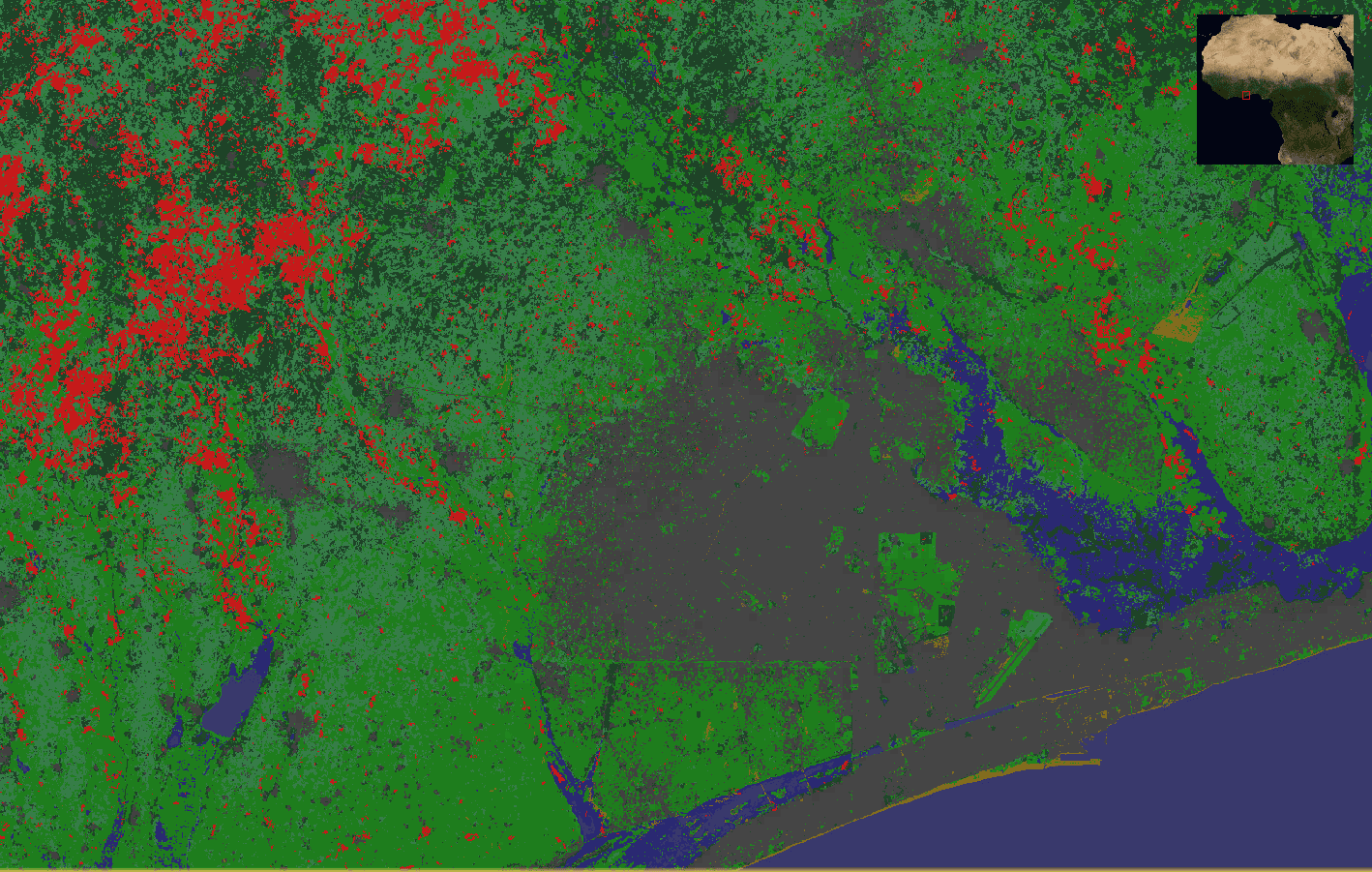Background
Biomass burning is one of the key processes affecting vegetation productivity, land cover, soil erosion, hydrological cycles, and atmospheric emissions. Fire is affected by climate, as burning is associated with high to extreme weather conditions. At the same time, fire affects climate too, due to its impacts on carbon budgets and greenhouse gas emissions. These mutual influences between fire and climate explain why Fire Disturbance is considered one of the Essential Climate Variables (ECV) by the Global Climate Observing System (GCOS) programme GCOS-245, 2022.
The ESA Fire_cci project tackles multiple issues regarding fire disturbance, which is tackled through the analysis of Burned Area (BA). Fire_cci, as part of the ESA climate change initiative, feeds directly into the Copernicus Climate Change Service (C3S).
The products
The data produced within the Fire_cci and C3S projects provide global information of total burned area at full satellite sensor resolution and at reduced resolution. The full resolution (“pixel”) products provide for each pixel the burned area as the date of the first detection of the burned signal, the confidence level indicating the burn probability, and the land cover information. The reduced resolution (“grid”) product provides for each grid cell the total burned area, the standard error, and the burned area per land cover type within the grid cell, all in square meters. The land cover information is taken from the Copernicus Climate Change Service (C3S) land cover dataset, thus strengthening consistency between the datasets.
BC activities
Brockmann Consult have been contributing to the Fire_cci project since 2015. Since then, we produced many datasets within the scope of this project, which are all publicly available at ESA Climate Office.
A remarkable challenge and success within the Fire_cci project has been the production of the Small Fires Database (SFD). Those dataset cover Sub-Saharan Africa, and it is based on Sentinel-2 MSI images at 20m spatial resolution. For more information on the SFD see the respective peer-reviewed paper at https://doi.org/10.1016/j.rse.2018.12.011.
Starting in 2022, Brockmann Consult have produced global Sentinel-3 Synergy-based BA data within the frame of the Fire-CCI project, ranging from 2020 to present. Likewise, Brockmann Consult continues the production of a global MODIS-based BA dataset, ranging from 2001 to present.









